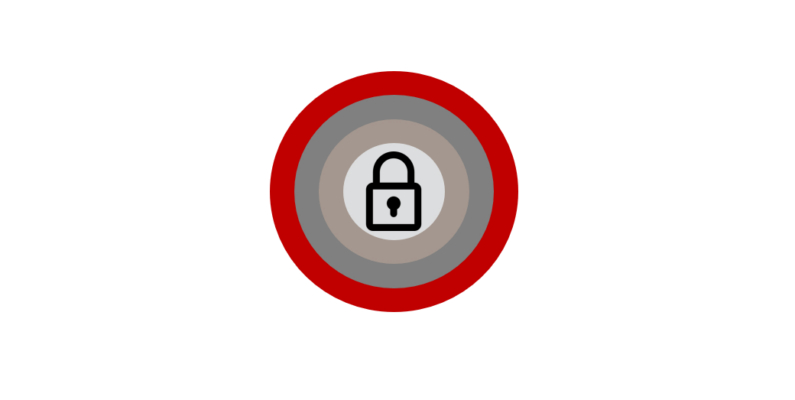Prevent Cyberattacks and Protect Your Information With a Multi-Layered IT Security Approach
IT Radix strongly believes in a strategic, layered approach to IT security for your infrastructure, network, applications, cloud security and any Internet of Things (IoT) security. Your IT security plan should address each of these areas and the three components that play active roles in a cybersecurity posture: people, processes, and technology.
Your IT Security Plan Should Weave Together Your People with Processes and Technology
1. PEOPLE: Your Highest Area of IT Security Risk
Your organizational staff is the area of highest cybersecurity risk. Research from Stanford University and a top cybersecurity organization found approximately 88 percent of all data breaches are caused by an employee mistake. Human error is still the driving force behind most cybersecurity problems.
Here are some recommended components to consider in your IT security planning:
- Security Awareness Training. Most people are not intentionally bypassing your security protocols—they just are not trained on what to do and look for or do not understand the significance of their actions. Want to make a substantial difference in your company’s security posture? Conduct security awareness training and regularly reinforce the most basic cybersecurity principles. Conduct regular and ongoing security tests including phishing emails, vishing, smishing and more. Remind your team that if it seems strange, it probably is!
- Password Management with Multi-Factor Authentication (MFA). Surprisingly, many still do not understand using the same password for ages is not a great idea. Educate employees about the importance of frequently changing passwords, using unique and strong passwords and give them tools to store passwords. Implementing a second method of authentication in addition to a password significantly increases your IT security.
- Personally Identifiable Information or Other Confidential Information. Everyone handles information at work, from personal web browsing to client data to vendor information and more. Emphasize the importance of thinking about the information they are using and sharing protected. Things includes not revealing too much personal information on the various social media platforms such as Facebook, Twitter, Instagram and more. These platforms and malicious websites are used by hackers to gather intel or confidential information. Limit access to information and software on an as-needed basis and review access permissions regularly.
- Physical Security for Devices. Working remotely at home or on the road? You need to protect your information every time a device is left unattended or connected to an unknown network. Use the screen lock features, encrypt the hard drives, use MFA to login, and more. Just as you are advised not to leave your luggage unattended at an airport, protect your devices no matter where they are.
2. PROCESSES: Let the IT Professionals Focus on Your IT Security Processes
Whether you outsource to IT Radix or we partner with your in-house IT staff, the IT security processes we use to protect confidential data are multi-faceted. The goal: To detect and identify threats, protect information, and respond and recover from incidents.
Continuously monitor and maintain your IT infrastructure. It is easy for an unsavvy user to go about their daily business without backing up data regularly or updating their systems especially in today’s hybrid work models. IT Radix works with you to ensure critical monitoring and maintenance processes are in place. If something should happen, having a well-documented incident response process can save your company time, money, and the trust of your most valuable asset—your customers.
3. TECHNOLOGY: The Tools Used to Implement IT Security
People and Processes are vital layers in your overall security plan. Built into both layers are a host of technology items in our technology toolbox that can add further protection and value:
- DNS Filtering to block access to nefarious websites, content, and links
- Data Loss Prevention strategies to protect against unsecure access or deletion
- Multi-Factor Authentication for access to networks and key applications
- Antivirus in combination with sophisticated endpoint protection software
- Managed Detection and Response Software for your cloud applications
- Firewall security devices to monitor and filter network traffic for anomalies and malware
- Vulnerability Scans — both internal and external to your network
- Email Security Solutions for secure access anywhere
- Application Whitelisting Software — also known as Zero Trust Architecture
- Secure Encryption of data, email, and devices
- Data and Network Segregation
- Security Awareness Training to ensure your staff acts as your first line of defense
- Management of Software Patching and Updates
- Backups of local and cloud architecture
- Spam Filtering to identify emails that attackers use to send unwanted or dangerous content.
With Bring Your Own Device (BYOD) and Work From Home (WFH), the perimeter of your organization has expanded tremendously.
FINAL THOUGHTS:
With Bring Your Own Device (BYOD) and Work From Home (WFH), the perimeter of your organization has expanded tremendously. Keeping in mind the security basics of locking all your doors, windows, and more will keep you secure.
Top Benefits of Working with IT Radix on Your IT Security:
- Peace of mind
- Access to expert knowledge
IT Security and especially cybersecurity is complex. The best way to prevent attacks and protect your information is a multi-layered IT security approach that weaves together your people with processes and technology.
Click here to schedule a conversation with an IT Radix expert about how to strengthen your IT security perimeter using the items above and more!


